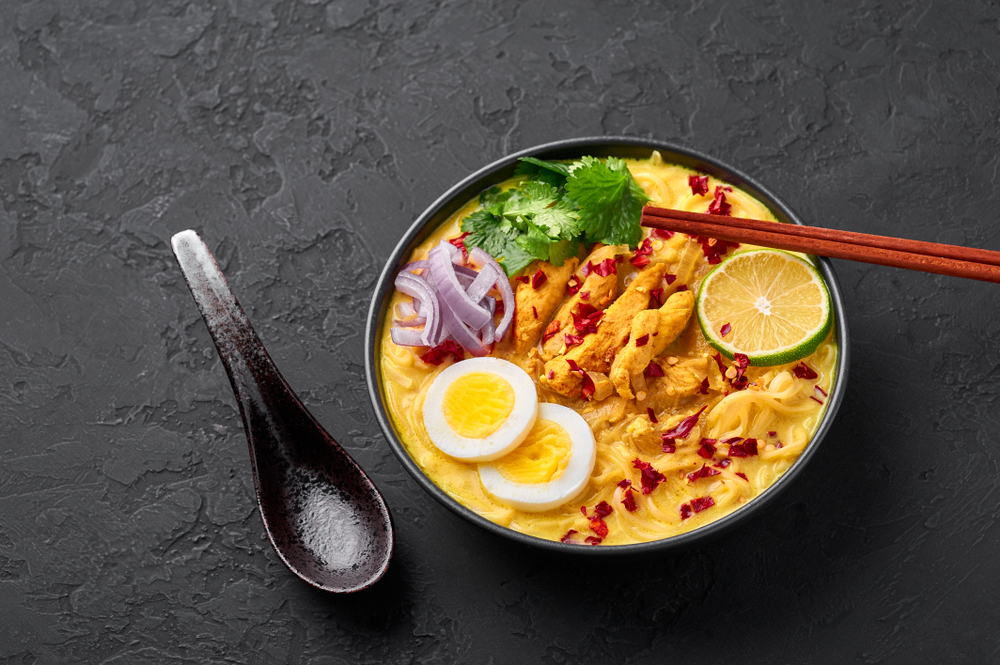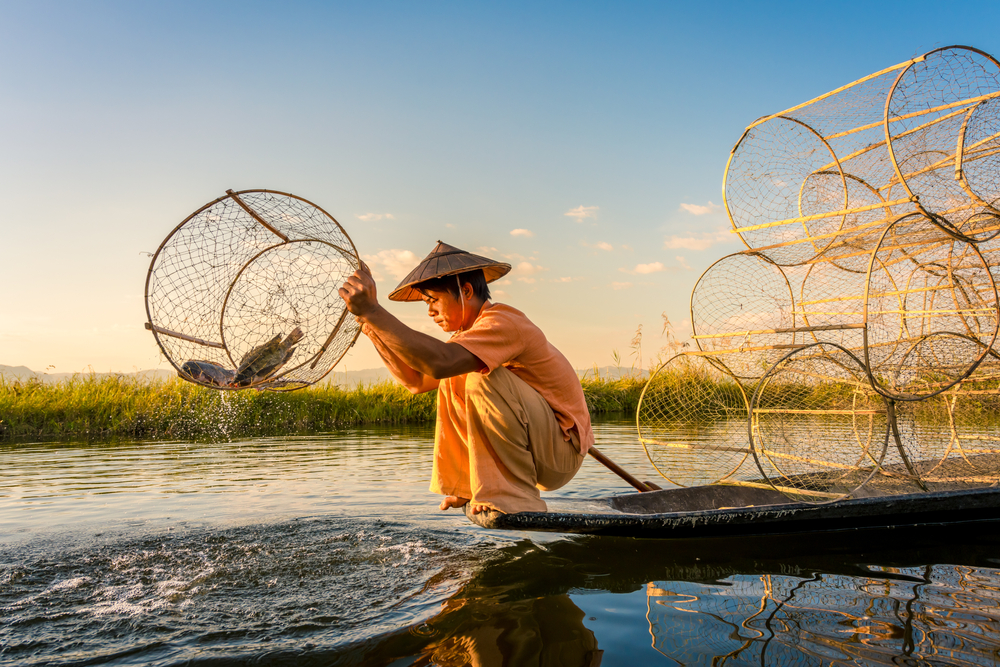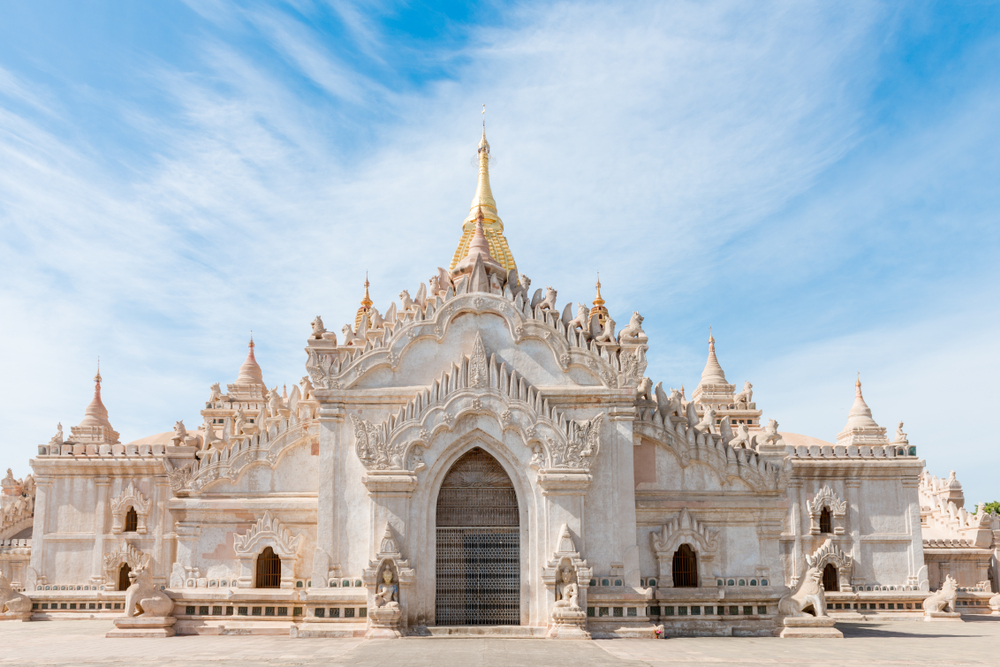A guide to Burmese cuisine
Myanmar wakes up slow. Dawn cracks over the Irrawaddy, light spilling over golden pagodas and sleepy teahouses, the air thick with steam from bubbling pots of mohinga—the unofficial national dish. It’s the kind of place that pulls you in, not with grand gestures, but with its quiet hum of daily life. And at the heart of it all is the food: bold, unapologetic, deeply tied to land and history.
Yangon is a city where colonial ghosts linger in crumbling facades and incense curls from roadside shrines. It is a place where lunch is a cherished tradition. A steaming bowl of Ohn No Khao Swè arrives at the table, rich with history and flavor. This dish satisifies with its thick, coconut-laced broth swirling around tender wheat noodles, poached chicken, and a hit of chili oil.

It’s Burmese comfort cuisine, tracing its roots back to the Silk Road, with hints of Indian spices and the creamy decadence of Thai curries. The tea shop are packed, the air buzzing with rapid-fire Burmese and the clink of spoons against bowls.
Food here is never just about sustenance—it’s a conversation, a connection, a story. And that story leads north, to the floating villages of Inle Lake.
Inle Lake: Where Water and Flavor Collide
The longboat carves through the still waters of Inle, sending ripples across the floating gardens. The fishermen here are a remarkable spectacle—balancing on one leg at the edge of their narrow wooden boats, they wield conical nets with an elegance that defies expectation. It’s an art passed down through generations, their silhouettes stark against the morning mist.
Lunch is as fresh as it gets. A local family welcomes you into their stilted home, where fish from the lake hits the fire moments after being caught.

The air fills with the scent of lemongrass and tamarind as the fish sizzles, its skin crisping over the flames. The dish is simple—grilled fish with a side of lahpet thoke, a tangy salad of fermented tea leaves, garlic, and tomatoes. The first bite is vibrant: smoky, citrusy, laced with the depth of fermented tea.
There’s a philosophy here—nothing is wasted, everything is honored. Vegetables grow in the floating gardens, their roots anchored in the water. Tomatoes, eggplants, and gourds flourish in neat rows, fed by the lake itself. It’s a closed-loop system, a delicate balance of nature and human ingenuity.
Markets, Mohinga, and Late-Night Eats in Mandalay
If Inle Lake soothes, Mandalay bustles. The city pulses with energy, its streets lined with motorbikes, its markets a sensory overload. The markets are filled with stalls of dried fish, fresh chilies, and pyramids of turmeric. Vendors call out, offering slivers of green mango dipped in chili salt, skewers of grilled meat, and bowls of steaming mohinga—the fish-based noodle soup that fuels the nation.
You stop at a stand where a grandmother ladles mohinga from a massive pot. The broth is rich, thickened with ground rice, layered with the briny punch of fish and the brightness of lemongrass. A handful of crunchy split-pea fritters go on top, adding texture to the soup. It’s a dish that tells the story of Myanmar’s rivers, of trade routes, of early morning fishermen.
Night falls, and Mandalay shifts gears. The markets glow under fluorescent bulbs, hawkers setting up shop with charcoal grills and woks that spit fire. Roadside stalls serve Myanmar beer alongside expertly flipped pork skewers over open flames. The smell is captivating—charred meat, garlic, the sweet caramelization of soy sauce meeting fire.
The Burmese Table: A Legacy of Flavors
Myanmar is a country in flux, but its cuisine remains steadfast—a reflection of its people, its history, its land. From the coconut-rich depths of Ohn No Khao Swè to the earthy smokiness of lake fish grilled over wood, each dish carries with it a sense of place. There’s no pretense, no unnecessary flourish. Just cuisine that resonates deeply, that roots you to the moment, that reminds you why you travel in the first place.
And as you sit by the banks of the Irrawaddy, sipping sweet Burmese tea and watching the sun dip below the horizon, you realize—some places don’t just stay with you. They become a part of you.







